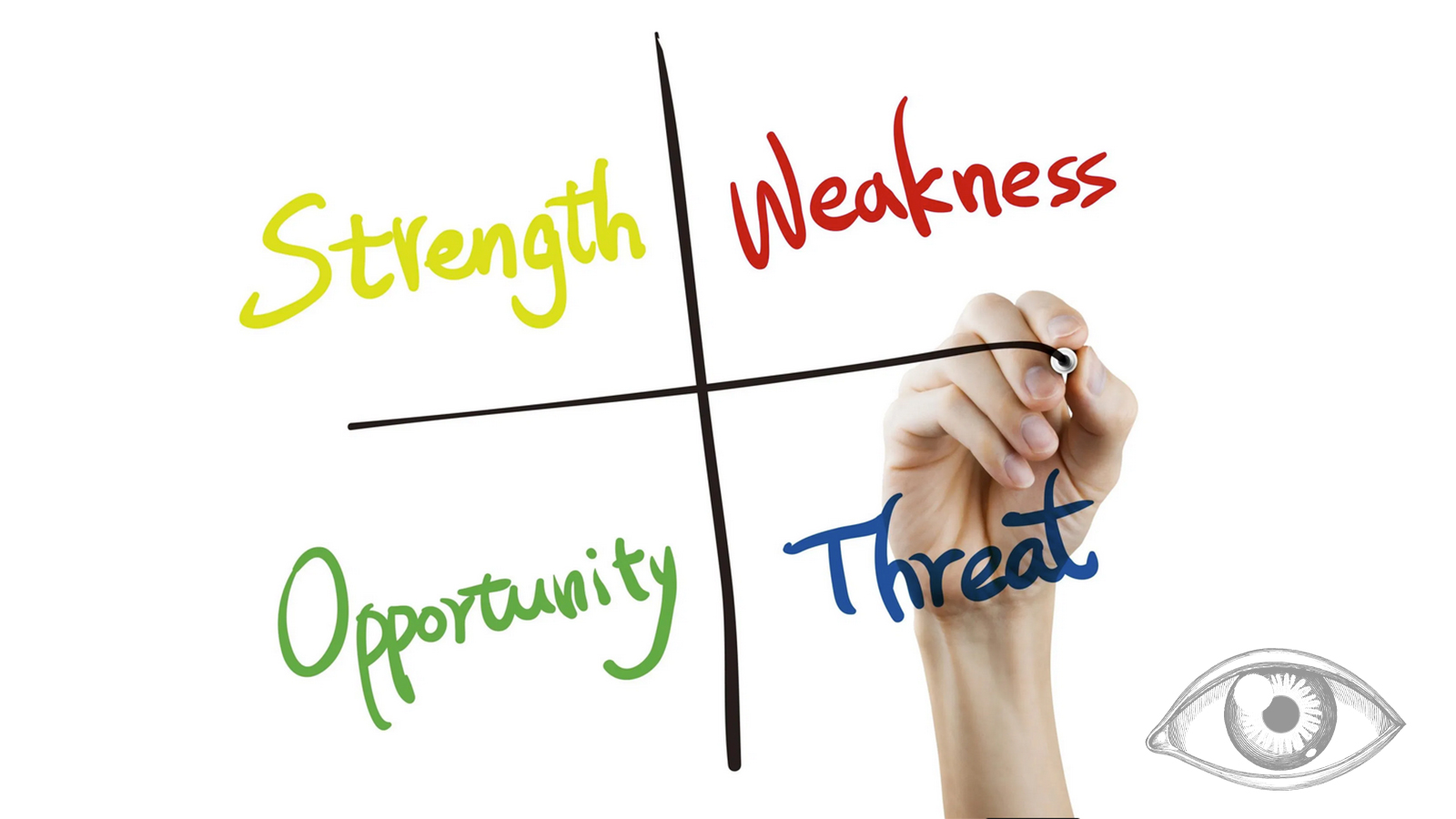Real results: 3 enterprise projects powered by Reliable Controls
Explore how our technology automates complex enterprise portfolios.






Since the dawn of humankind, courageous and curious men and women have been driven to wonder and to wander, to explore and to expand, to imagine and to improve. In many cases the destination might not be as important as the journey; but for entrepreneurs, having a specific destination, even if merely a waypoint on a larger expedition, is beneficial to maintaining momentum and measuring progress.
In exploration and entrepreneurship, knowing the destination is merely the first step. Early explorers discovered rudimentary ways to leverage the natural world in order to point expeditions towards their goal. However, knowing the direction in which we need to travel is alone insufficient. Despite the mathematical proof of Archimedes that the shortest distance between two points is a straight line, in a journey it is seldom that simple. Along nearly every path lies obstacles. Yet, a compass knows not of a crevasse, just as the stars know not of shoals, and the sun and moon are blissfully unaware of the dangers of a lee shore. Sustainable and successful navigation requires more than a simple bearing. From this need sprang the early art and science of cartography. Hand drawn and yet painstakingly detailed maps recorded not merely destinations, but also the hazards along the way, and the courses that were most likely to be predictive of success.
Many effective modern businesses and entrepreneurs have a plan, a general direction in which their organizations need to progress in order to thrive. However, a goal and a general bearing oftentimes presents unnecessary risk to sustainable success. There are many tried-and-true tools and techniques that entrepreneurs can leverage to make success more of an assured eventuality then a possibility. Some, like a compass, can help them stay moving in the right direction. Others, analogous to a map or a chart, can empower them to proactively plan an intelligent route to their destination; and to make informed course corrections along the way. One of these latter types of tools is an objective analysis of Strengths, Weaknesses, Opportunities, and Threats (SWOT). SWOT analysis is a common phrase knowingly bandied in business circles; however, awareness is insufficient. Many can see a map and identify landmarks; however, it takes some skill to accurately read a map and understand it sufficiently to navigate by its details. In a similar manner, many have likely performed a SWOT analysis; however, a casual or glancing consideration is often insufficient to avoid pitfalls, to set an intelligent course toward a goal, and to make informed course corrections along the way when the vicissitudes of life and business arise.
Leaders and managers can use a SWOT analysis to objectively identify internal factors (strengths and weaknesses) and external factors (opportunities and threats) that are already affecting, and those that are likely to affect, their organizations, their people, and their success. This analysis can be used to inform strategic planning, evaluate new initiatives, determine how to best focus teams, and guide marketing campaigns. The analytic process is often best performed as an open, interactive discussion. A SWOT analysis will be more impactful with the participation of the right people.
Size. Since it should be a collaborative process, it can be beneficial to manage the size of the team involved; some authorities recommend at least four, but no more than ten people. This provides diverse perspectives without making the conversation cumbersome and potentially unmanageable.
Diversity. To receive a relevant analysis, it is important to include a diverse group of stakeholders who are knowledgeable about different functional areas of the company, are trusted and respected in their fields of influence, and have established reputations for open and honest communication. Those who can recognize and articulate negative influences (weaknesses and threats) are as integral to the process as those who can recognize positive influences (strengths and opportunities). A balance of personalities and perspectives is ideal.
Relevance. Involving those with access to the relevant data (technical, people, market, and financial) is crucial to an informed analysis. It’s often predictive of success to include those who will be accountable for leading the organization, teams, or initiatives being evaluated.
Perspective. Finally, some leaders might be too emotionally involved, or team members might be too close to the processes already in motion to be truly objective. It can oftentimes be beneficial to involve outsiders (trusted partners, new team members, long-time customers) for more unembellished assessments.
Once the right people with the right information are in place, the collaborative process can begin. One recommended approach to a SWOT analysis follows four simple steps, repeated for each of the four influences (strengths, weaknesses, opportunities, threats):
Blue Sky. In a brainstorming session, every participant in the process should be encouraged to provide what they believe to be relevant influences. Some facilitators require minimal feedback; for example, 3-5 ideas from each person. With minimal evaluation, each idea should be recorded on a white board or online collaboration tool so that everyone can see all the contributions. The goal of the first step is to collect as many ideas as possible. Participants should be encouraged to be succinct; specific without getting lost in the weeds.
Consolidate. In the second step, the team should evaluate the influences that were captured during the blue-sky session. Each concept should be discussed one-by-one in search of duplicate or overlapping ideas. Any traits that the participants agree are redundant should be grouped into common expressions.
Clarify. In the third step, the participants should once again review the (now unique) concepts individually and seek clarification where it is necessary to ensure a common understanding of each influence. For effective evaluation, each participant should accurately appreciate each idea.
Prioritize. The nature of a blue-sky session is to capture many and disparate ideas. Neither organization nor person can do everything at once. The purpose of the final step is to narrow the influences from each of the four categories down to the 2-3 that are most relevant to the objective. As much time as is necessary should be taken to achieve consensus on the prioritized influences so that there is the requisite buy-in to execute initiatives that result from the analysis.
When prioritizing strengths and opportunities, it can be particularly beneficial to focus on the positive influences that have the most compelling impact on the objective and/or customer; and then, further focus on those helpful influences that differentiate the organization or team in their operational space.

When prioritizing weaknesses and threats, focus on the negative influences that have the most compelling impact on the objective and/or customer; and then, further focus on those harmful influences to which the organization or team might be the most susceptible in their operational space.

Finally, when prioritizing, it can be beneficial to focus on the influences upon which substantive action can be taken in the next 12 months.
Once the prioritized influences from all four categories have been agreed-upon, they should become the foundation upon which actionable decisions can be made. SWOT analyses commonly use a 2 x 2 matrix to capture the prioritized influences that will be used to guide the organization, team, or initiative. Internal influences are generally aligned at the top with external influences along the bottom; positive influences are aligned to the left with negative influences aligned to the right.
The first step to reading a map is understanding the natural characteristics represented by the subtle annotations and symbology of its elements. Orientation, projection, landmarks, scale, and topology are crucial to empowering an effective course.
In the same way, it is not only the process, but indeed the elements of a SWOT analysis that are commonly misunderstood. SWOT is a strategic analysis of internal and external influences that are positive (or helpful) and those that are negative (or harmful). Discovery of the influences are in themselves a valuable exercise; however, the concepts identified need to be actionable. The end goal of a SWOT analysis is not merely philosophical exploration; but rather, to facilitate informed decisions and intelligent action.
Strengths are an internal influence; meaning that they are in the control of the team or organization. Strengths encompass positive traits that are helpful to achieving a desired goal. Strengths often incorporate core competencies; those capabilities and resources at which a team or organization excels, and especially that are most valued by customers. This can include tangible concepts like products, and intangible concepts such as innovation and loyalty. Some examples of strengths include:
Unique strengths can provide important leverage in an otherwise congested marketplace and act as a force multiplier for an organization; making a team of ten feel like one hundred. When evaluating similar solutions or products, unique strengths can empower a differentiated value proposition that results in a tangible advantage.
Organizations should strive to carefully cultivate and promote strengths. As they already exist internally, leaders must take care not to grow complacent about strengths, but to continuously monitor and enhance their influence. In particular, any strengths that are especially compelling to customers or to mission success, should be proactively built upon and developed further.
Weakness are the second internal influence; meaning that they too are traits of the team or organization. Weaknesses are negative influences that can be harmful to achieving a desired goal. Weaknesses often include things at which a competitor excels and areas where a team or organization performs poorly. Again, this includes tangible and intangible concepts and are often similar to, but opposite of strengths. Some examples of weaknesses include:
There is a philosophy that professes strengths can often also be weaknesses; such as the way that success can lead to complacency, confidence to hubris, and humility to complacency. When blue-sky thinking about weaknesses, consider if any of the strengths that have been previously identified could also contribute to weaknesses of the team or organization.
Weaknesses can act as impediments in an otherwise congested marketplace. When evaluating similar solutions or products, weaknesses that are perceived as unique can be an automatic blocker to an opportunity or can result in a tangible disadvantage. It can be difficult for a team to overcome a perception that they alone exhibit a specific weakness. While a competitive strength would best be categorized as a threat; if it aligns with an area where the team performs poorly, then the performance is a weakness.
Organizations should strive to actively reduce the impact and diffuse the perceptions of weaknesses. As they are already traits of the organization, leadership teams should strive to mitigate and resolve weaknesses; particularly those that have a direct negative impact on the objective and/or customer.
Opportunities are an external influence; meaning that they are not controlled by the team or organization. Opportunities are positive influences that can be helpful to achieving a desired goal. Opportunities oftentimes include market trends and forces upon which an organization or team can capitalize including:
External influences have a measurable and regular impact on an organization’s ability to accomplish its mission. Simply because they are outside the control of a team, does not mean that they are irrelevant. To the contrary, informed leaders will be aware not only of external influences that might prove beneficial to their success; but those that might be particularly beneficial. For example, perhaps a new marketplace or customer requirement speaks specifically to a product or service which is, or could be, a differentiated strength. This is an opportunity upon which the organization could bring to bear disproportionate leverage.
Organizations should find ways to proactively exploit external opportunities and expand them where possible; perhaps leveraging small opportunities into larger or more broadly reaching ones. Successful organizations focus effort where opportunities have a positive impact on customers or might open the way for new customers and opportunities to succeed.
Threats are the second external influence; meaning that they are not controlled by of the team or organization. Threats represent negative influences that can be harmful to achieving a desired goal. Like opportunities, threats oftentimes include market trends and forces that negatively impact an organization or team. Some examples include:
From the perspective of a tangible business or initiative, as primary economic drivers in a marketplace, three of the most common threats include market expectations, market health, and competition. Consumers that prioritize the lowest initial cost or cannot differentiate value between the products and services available, can pose a clear and present threat to the profitability and health of a commercial initiative. In a like way, overall market health can be both an opportunity when economies flourish, and a threat during financial downturns.
When it comes to competition, it can be easy to focus on the known and unknown threat of rivalry between existing competitors; organizations already active in the marketplace providing similar products and services. This represents a threat of which an organization is aware; but, can still be an unpredictable risk. Even so, competitors are typically not prohibitively difficult to quantify. However, it is important to also consider the unknown threats that can exist in the form of four additional and often underappreciated competitive forces: new entrants to the marketplace, substitute products or services, bargaining power of suppliers, and bargaining power of consumers. These represent additional threats of competition which an organization may not be aware and therefore pose risks for which it is more difficult to prepare (Porter, 2008).
Organizations have very little control over these threats. However, it would be naive to be either ignorant or unprepared. Leadership teams should plan to avoid, or where possible, neutralize and overcome threats; particularly those that have a direct impact on their customers and/or their ability to achieve their mission.
One of the most common missed opportunities of a SWOT analysis is not a fault of the analysis itself; it is a failure to follow-through on the information that has been gathered. All too often organizations misunderstand the analysis and its inclusive goals. However, the process of the SWOT will only have value if it influences the decisions made by the team or organization. The SWOT team should be given time, but not too much time, to review and reflect upon the 2-3 priorities identified for each of the four categories. Within a few days, while the influences are fresh in mind, it is important to meet again, perhaps with senior leadership, to ratify the priorities and to begin the process of identifying SMART (Specific, Measurable, Agreed-upon, Realistic, Time-bound) goals that can be used to enhance strengths, reduce weaknesses, exploit opportunities, and neutralize threats. Recall the recommendation to prioritize influences that could be acted upon with 12 months.
A SWOT analysis should be a living document. Just as a navigator will periodically check the map to measure progress and to see if a course correction might be required, an effective SWOT should be revisited regularly (as appropriate for the scope of the analysis; perhaps quarterly). Time and tide, consumers and competition, wait for no man. On a longer cycle (as appropriate for the scope of the analysis; perhaps annually or bi-annually) it can be beneficial to perform a new SWOT analysis to intelligently prepare the organization for the next leg of the journey. New SWOT analyses can be compared with those performed previously to ensure that strengths are being cultivated, weaknesses are being overcome, ever-changing opportunities are being exploited, and threats are being monitored and avoided.
Nobel award winning poet T.S. Eliot observed “We shall not cease from exploration, and the end of all our exploring will be to arrive where we started and know the place for the first time”. An effective SWOT analysis can be an invaluable tool not only to proactively plan for sustainable success; but indeed, to better understand where a team is today, and how it is positioned to proceed. Those who can dispassionately and objectively evaluate the strengths, weaknesses, opportunities, and threats facing their organizations, their teams, and their initiatives are better equipped to be in control of their success rather than consumers in their marketplace and victims of their circumstances.
The success of Reliable Controls is inexorably tied to the success of Reliable Controls Authorized Dealers around the globe. Together we are stronger. When we collaborate on strategic success it is very nearly assured. The entire team at Reliable Controls exists to be better by design™; better today than we were yesterday in the pursuit to earn the reputation for having the most satisfied customers in the building automation industry. Reliable Controls Regional Sales Managers bring excellent perspective from local marketplaces and peers worldwide. These teammates can be an excellent partner in objective evaluation and planning for strategic success. We encourage Reliable Controls Authorized Dealers to take full advantage of these experienced sales professionals and partners in planning for success as an assured eventuality rather then a possibility.
American author Mark Twain is quoted, “The secret of getting ahead is getting started”. The first step is often the most difficult. Together, let’s plot a path to success and ensure that we are people and technology our customers can rely on.
Harvard Business School Publishing. (2015, July 28). HBR Tools: SWOT Analysis.
Retrieved from Harvard Business Review: https://hbr.org/product/hbr-tools-swot-analysis/TLSWOT-ZIP-ENG
Porter, M. E. (2008, January). The Five Competitive Forces That Shape Strategy. Harvard Business Review. Retrieved May 25, 2019, from https://hbr.org/2008/01/the-five-competitive-forces-that-shape-strategy#comment-section
Picture credits: 129091909 © Iankovskii Ian | Dreamstime.com; ID 43307847 © Keithburn | Dreamstime.com; 103706538 © Maksim Prochan | Dreamstime.com; 41820932 © Gajus | Dreamstime.com; 57988847 © Denisismagilov | Dreamstime.com; 96417565 © Pavol Stredansky | Dreamstime.com.

Explore how our technology automates complex enterprise portfolios.

AHR Expo is always a highlight for the Reliable Controls team. Here's what we learned this year.

Learn how we're helping shape an industry where everyone can thrive.

Explore 5 inspiring education projects that showcase the power of people and technology you can rely on.

Read about three great sports and wellness venues enhanced by Reliable Controls technology.

Are you a school administrator or facility manager? A fully integrated Reliable Controls solution can empower you to offset your energy costs, create healthy classrooms, and safeguard occupants. Here’s how.

The future of building automation is here! Learn about Ethernet controllers, and discover how the RC-FLEXone will elevate your building’s performance.